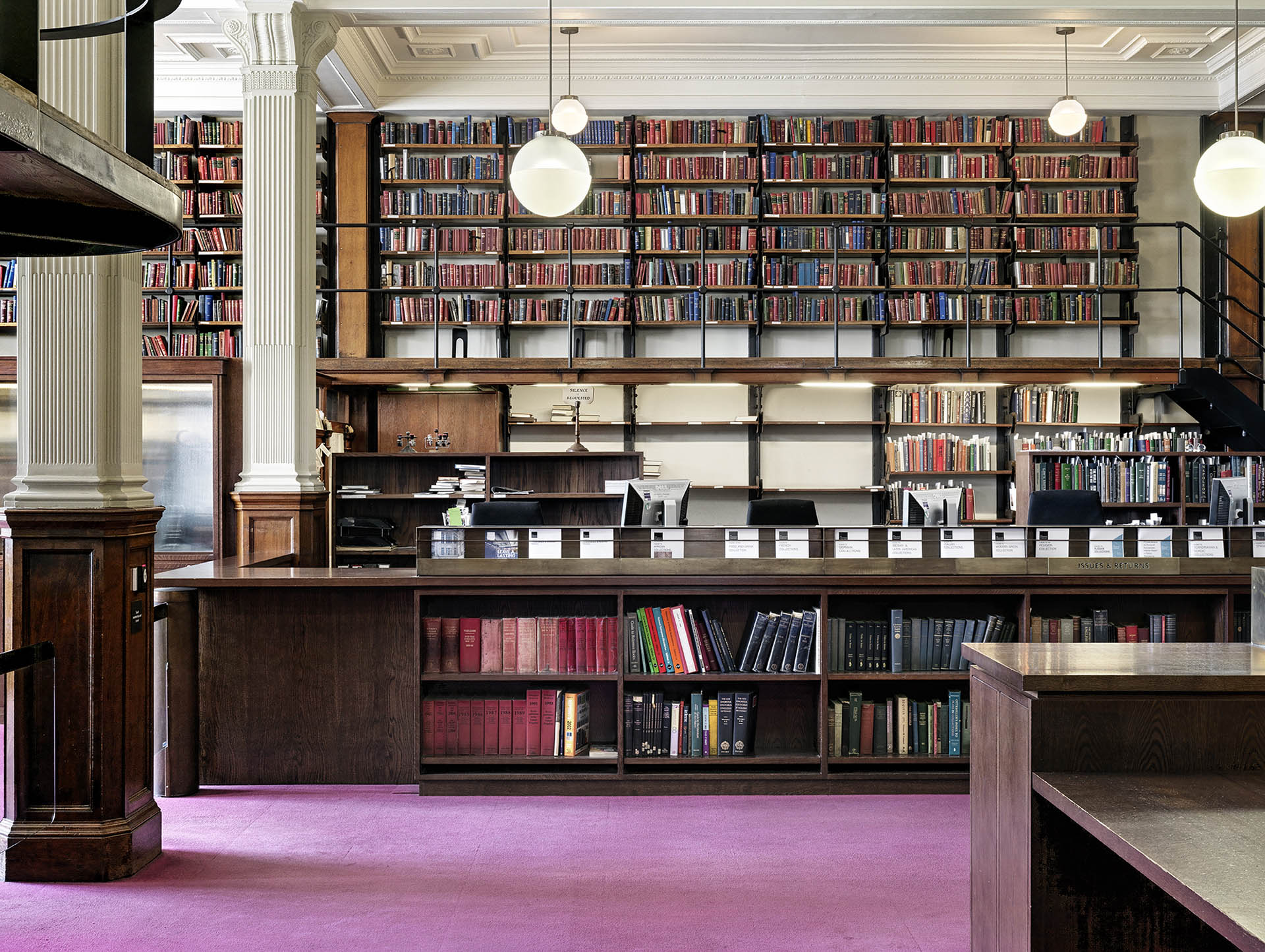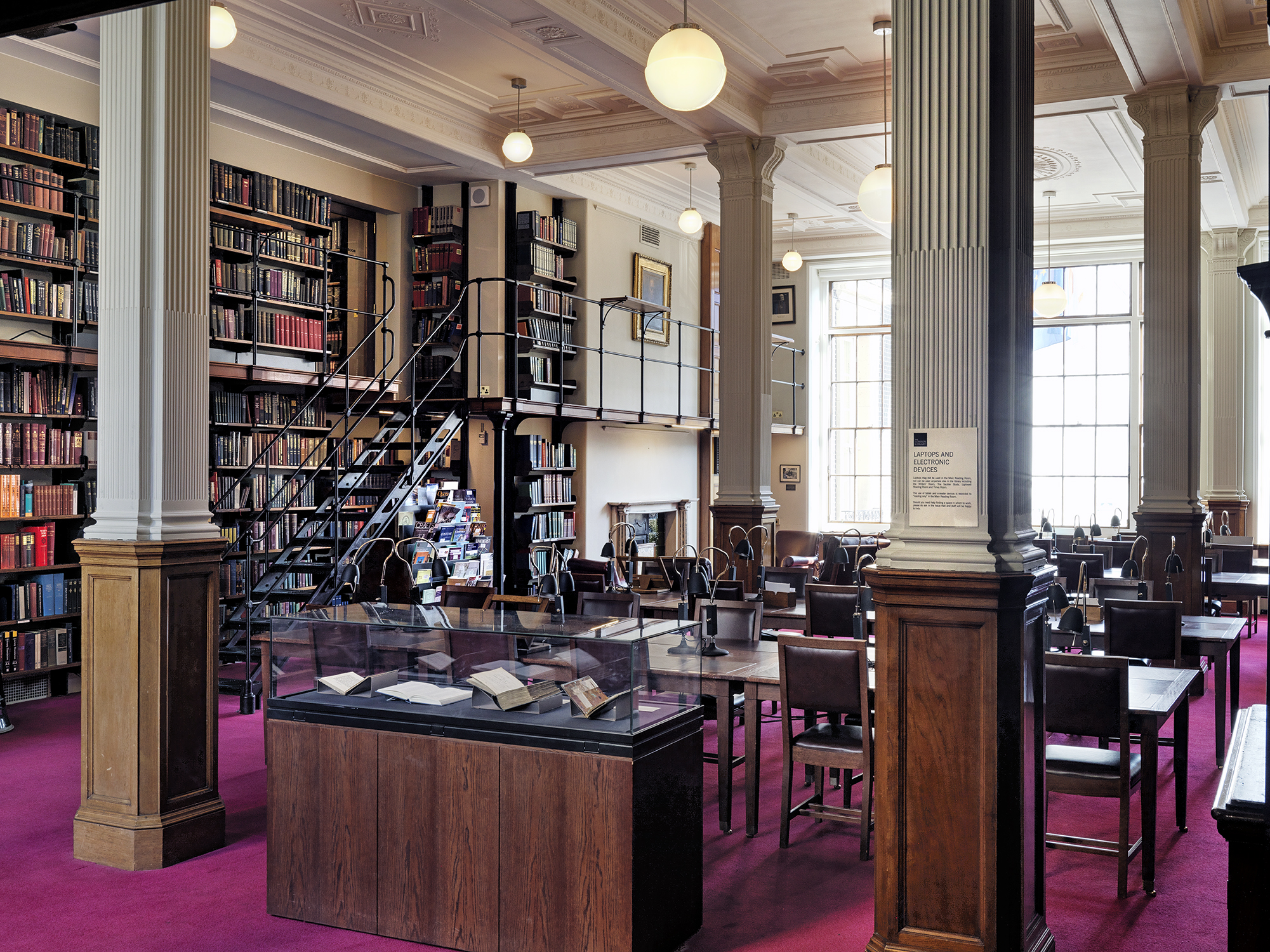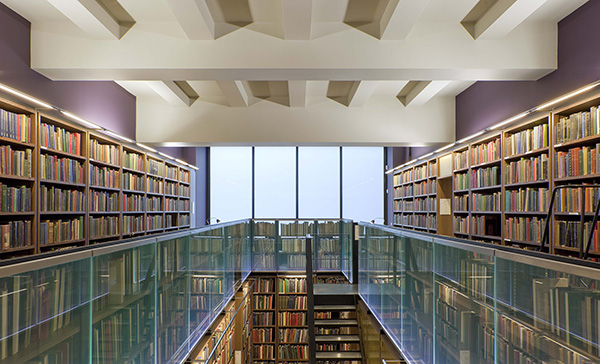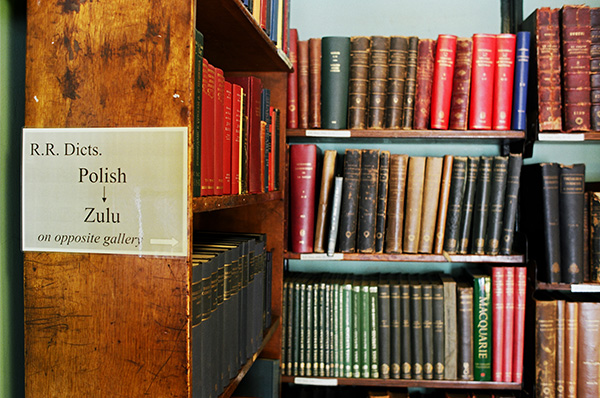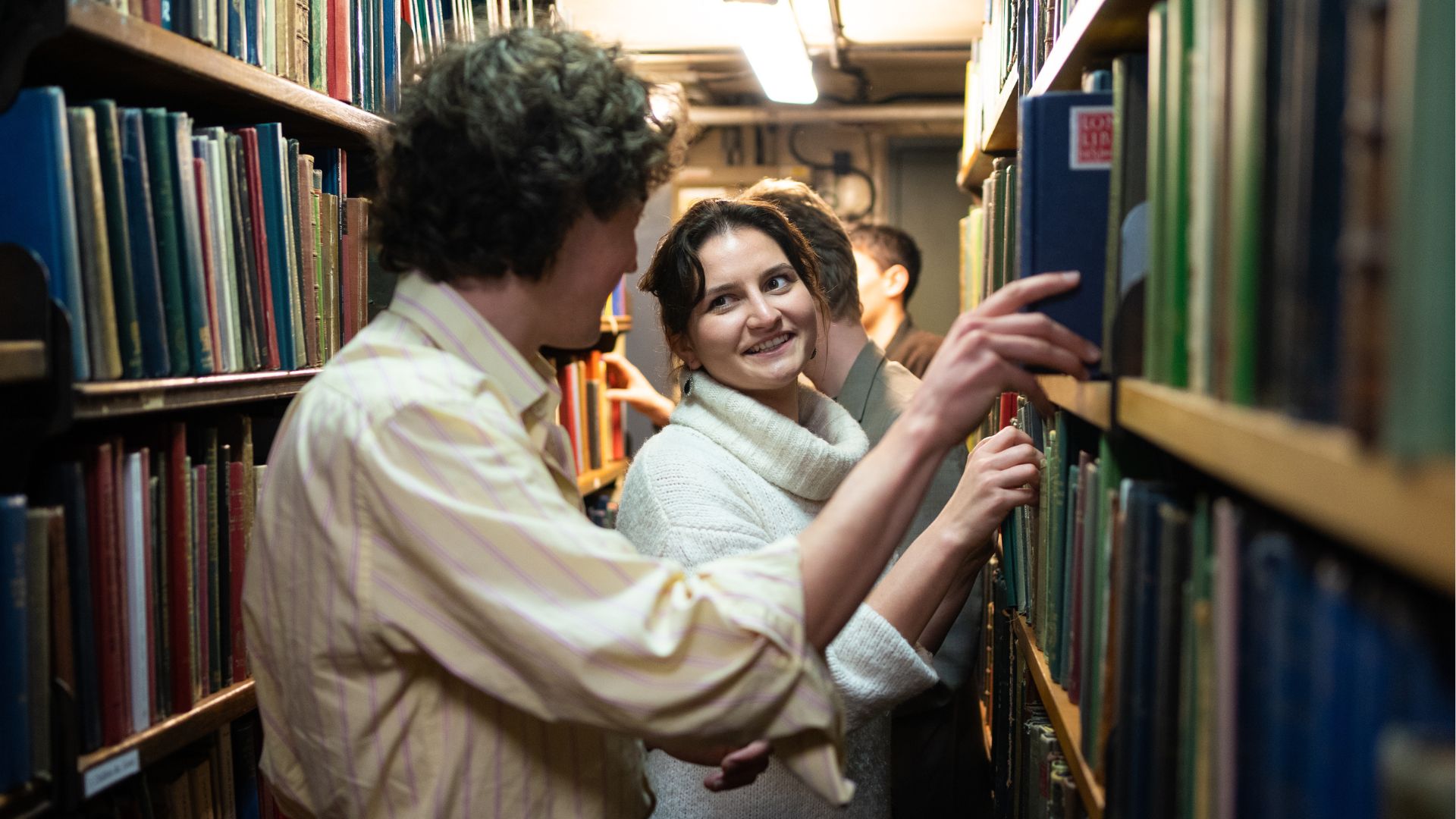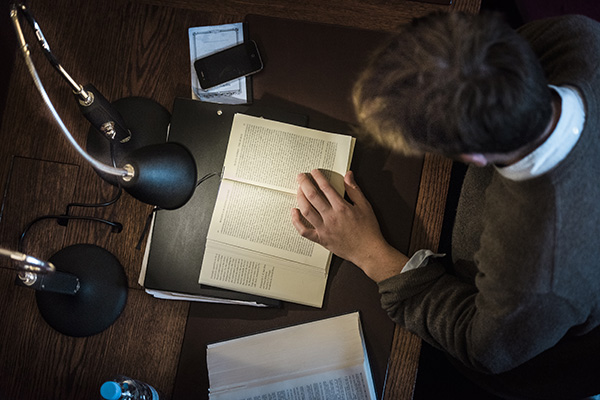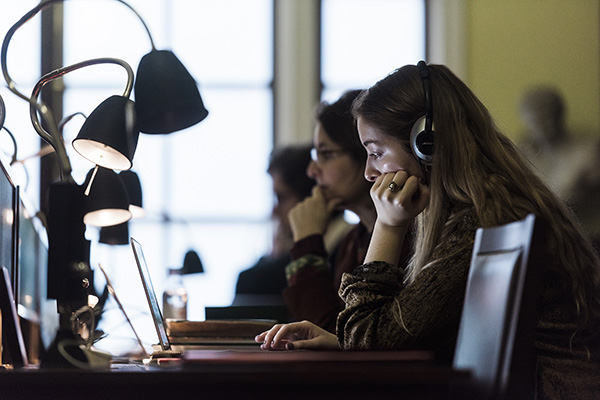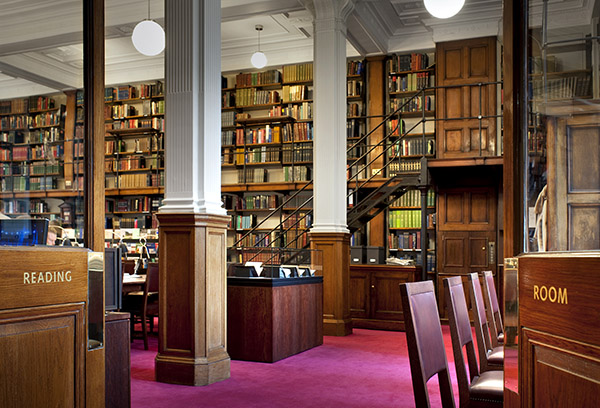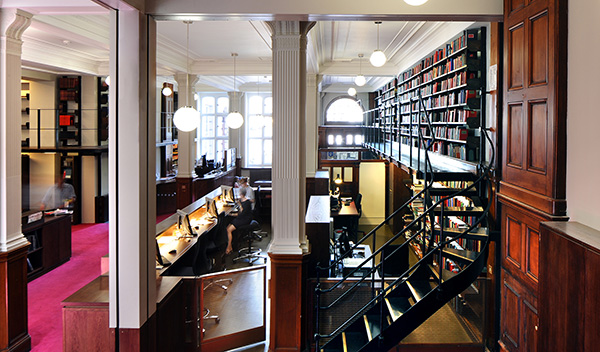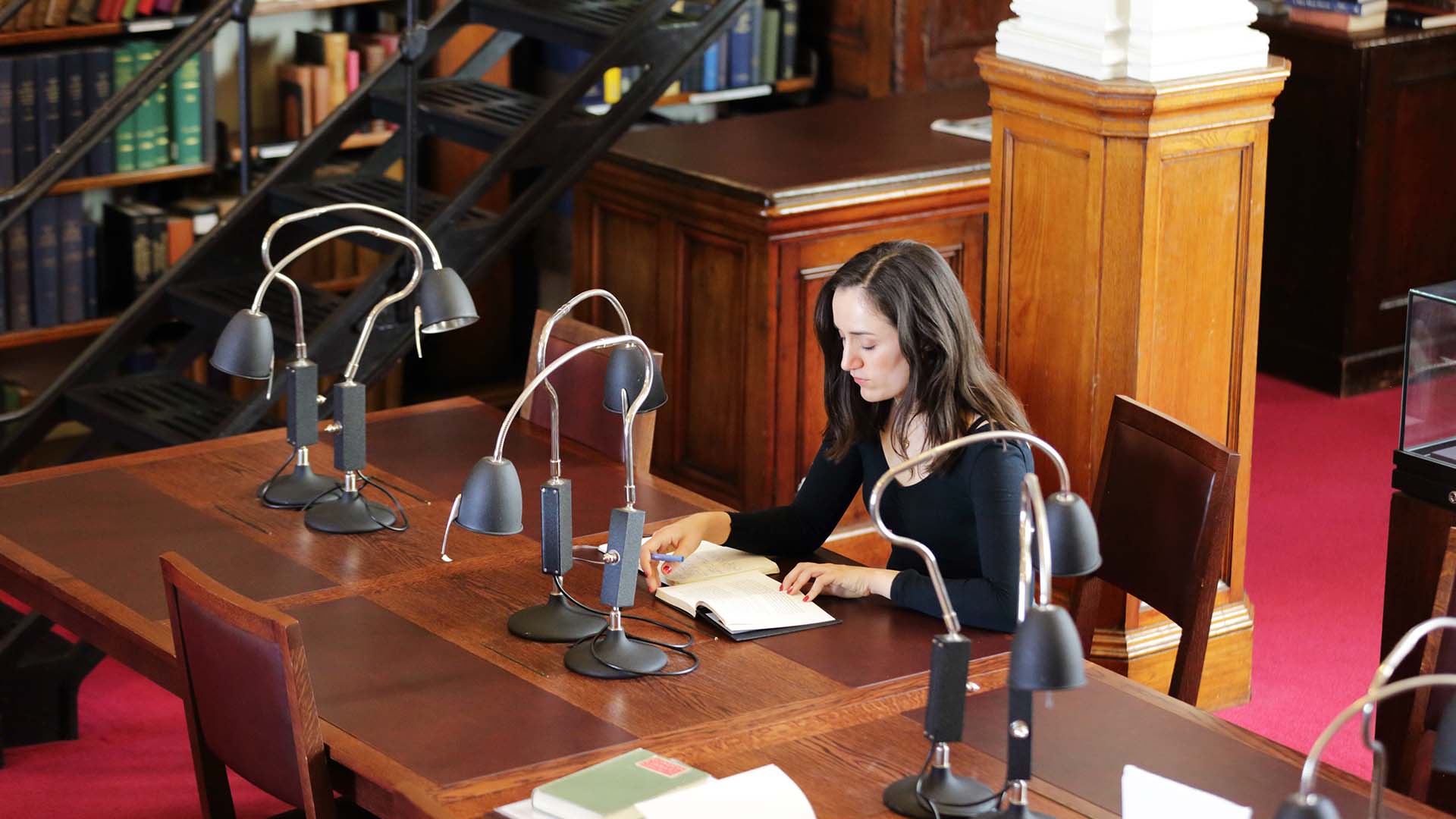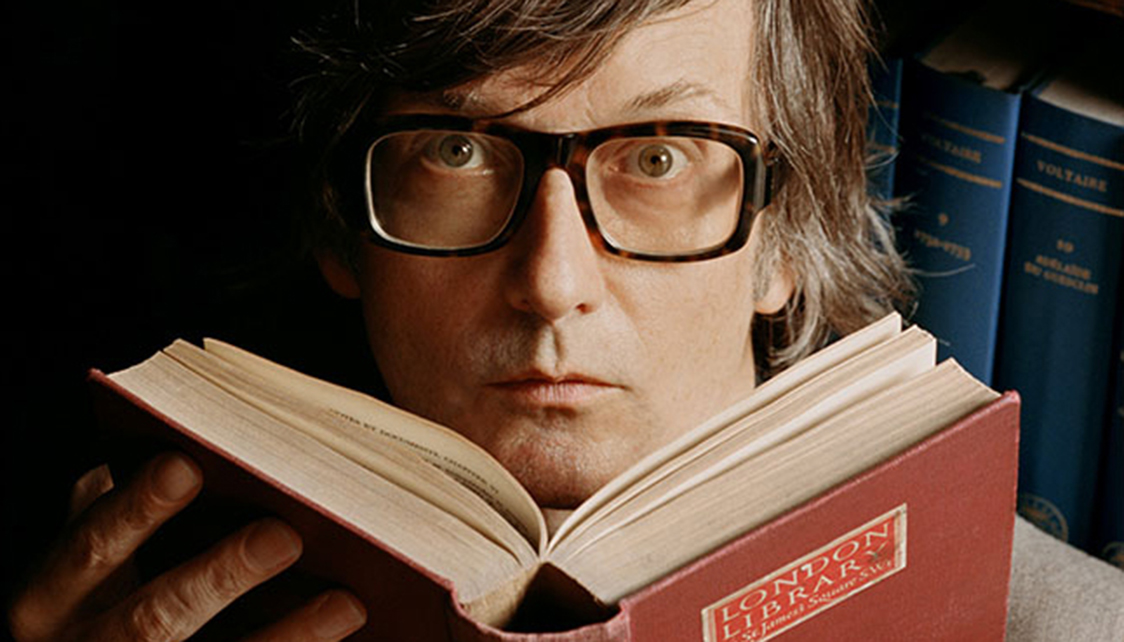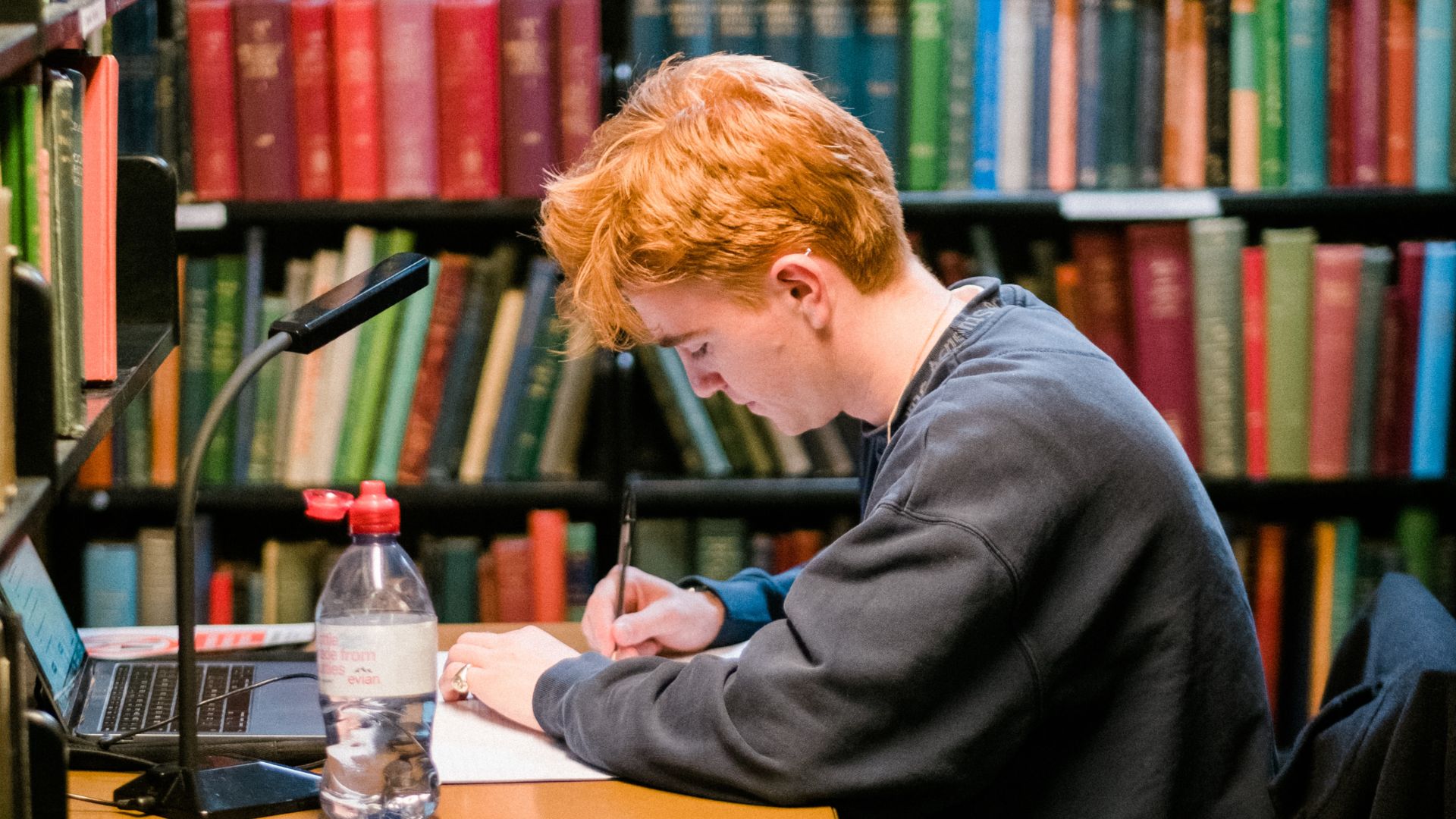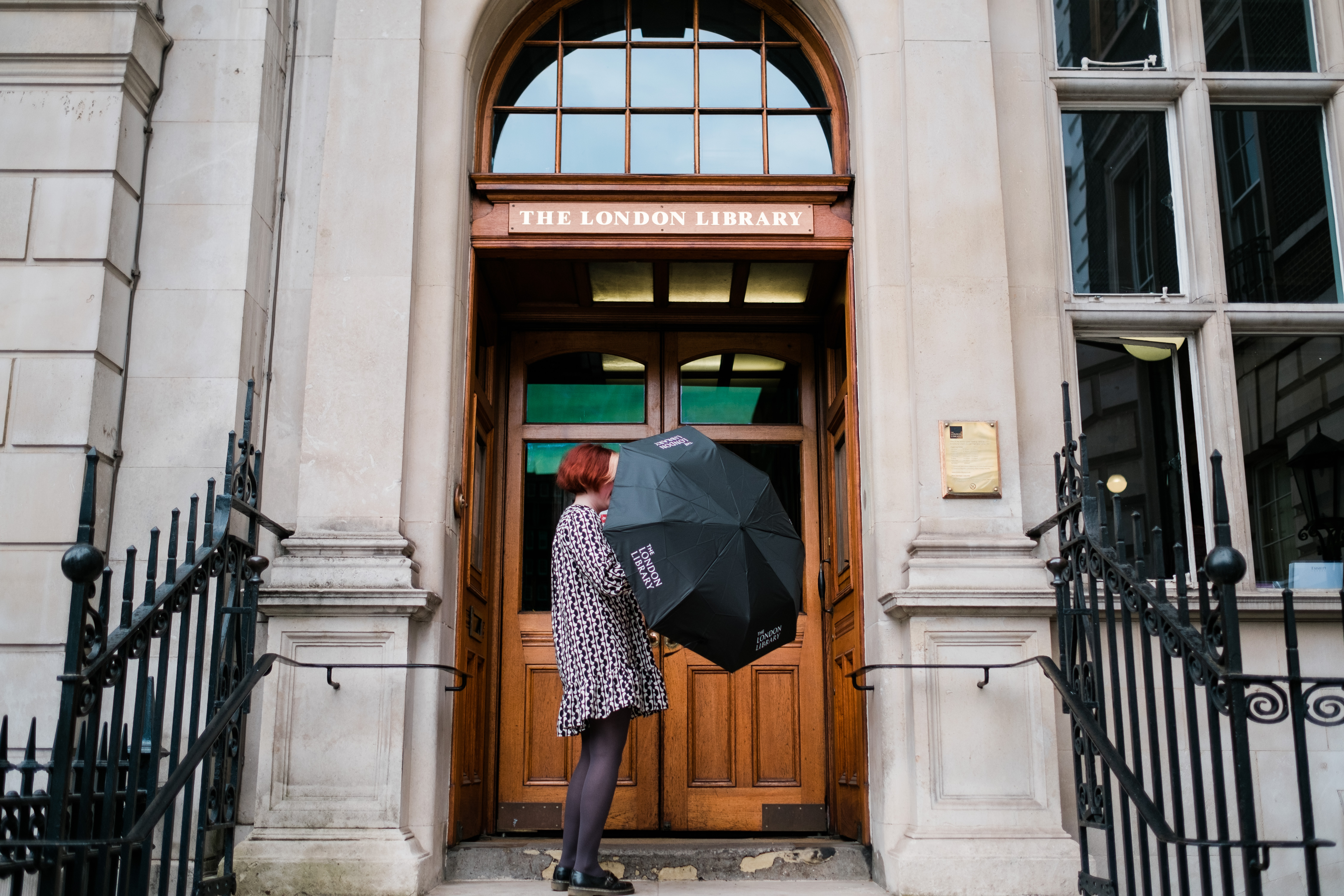
Since it opened, 180 years ago this year, The London Library has been a vital source of inspiration and support to writers. From Charles Dickens and George Eliot in the 1840s to Sir Kazuo Ishiguro and Sarah Waters today, writers of all different kinds have used the Library’s unparalleled lending collection and study spaces to produce countless works. Whether published as books or articles, or performed as plays or screenplays, these works have an economic as well as a social and cultural impact.
In 2020 we embarked on a project to understand the Library’s impact better. In particular, we wanted to learn more about the different ways in which the Library supports the creative process of its members and how that, in turn, contributes to the production of published works and benefits the UK economy.
The report undertaken by economic consultancy Nordicity and Chartered Accountants Saffrey Champness has revealed that The London Library generates an estimated annual value of £21.3m for the UK economy – equivalent to five times the Library’s annual operating expenditure. The intellectual property (IP) addition to this the IP creation enabled by the Library supports an estimated 460 full-time jobs across the UK’s creative industries.
The Library supports its members by providing unique access to a range of resources including one million volumes, an extensive eLibrary, research and reference assistance by our librarians, a studious and inspiring environment in which to work, and a community of members. Two thirds of the Library’s members are active in the production of creative IP such as published works of fiction and non-fiction, academia, screenwriting, poetry and playwriting. In fact the survey of members undertaken as part of this work revealed that The London Library’s 7200+ members produce on an annual basis:
- Over 700 published fiction or non-fiction books
- over 15,000 articles
- over 460 film scripts, TV screenplays or theatre scripts
The members who create these works attributed 33% of the creative process of this IP production to their membership of the Library.
The impact report concludes:
“The Library is hugely effective at stimulating and facilitating world-class creativity, and is determined to make its collection, spaces and creative community as accessible as possible to other potential and existing creatives. With increased public and private financial support, the Library will be able to invest in the physical spaces and outreach programmes that will enable the Library to continue reaching out beyond its traditional cohort of members. In this way, the Library can inspire and support future generations of writers and thinkers and continue to contribute to the UK’s world-leading position in research, storytelling and creativity.”

Case Studies from the report include:
William Boyd CBE
William Boyd is one of the UK’s most prolific and accomplished writers of fiction, non-fiction, film and TV screenplays and most recently stage plays. William joined the Library in 1983. He had just moved to London from Oxford and was looking for a library to replace the Bodleian Libraries that he had enjoyed whilst a lecturer at St Hilda’s College.
William has written 16 novels, 14 of which whilst being a member of the Library. Many of his novels have garnered critical acclaim and his 2006 work, Restless, won the Costa Book Award for Best Novel, and was adapted for TV as a BBC mini-series in 2012. His 1998 novel, Armadillo, was adapted by William himself and aired as a three-part series on the BBC in 2001. And his adaptation of his 2002 novel, Any Human Heart, aired on Channel 4 in 2010 and won the BAFTA for Best Series.
He has also written screenplays for Stars and Bars, Mr. Johnson, Aunt Julia and the Scriptwriter, A Good Man in Africa, The Trench, Man to Man, Scoop, Sword of Honour and 1992’s Chaplin, which was directed by Richard Attenborough and received three Oscar nominations.
Since 2009, William has had three plays produced: Six Parties, Longing and The Argument.
In the early years of his Library membership, William would spend nearly every day at the Library writing. In the pre-internet 1980s, libraries such as this were essential for researching for a book. In fact, his 1987 novel, The New Confessions, was written entirely at the Library.
The Library also became something of a literary and social hub for William. He knew the chief librarian at the time from his Oxford days and would bump into other people he knew from within the literary or wider creative community.
Over the years, William has come to use the Library much less as a place to write – he now writes from home – but for him it will always be a fantastic place to find books and do research. He makes particular use of the Library’s newspaper and periodical archives – something that cannot be found on the internet.
William also still loves to wander between the Library’s stacks. Indeed, for him and other novelists, it is this freedom to explore that is so important.

Deborah Davis
Deborah Davis is a lawyer, historian, journalist, scriptwriter, and film and TV producer. She first joined the Library in 1988 and, over the years, has written for film, TV, theatre and radio.
She is best known for co-writing The Favourite (2016), which was directed by Yorgos Lanthimos and starred Olivia Colman, Emma Stone and Rachel Weisz.
The Favourite was filmed at various locations around London and the South East, including Hampton Court Palace, Hatfield House and Danson House. And with a production budget of just over £11m, the film generated an estimated 250 full-time equivalent jobs (FTEs) of employment in the UK along with £13m in GVA.
The film won the Grand Jury Prize at the 2018 Venice Film Festival and was nominated for five Golden Globes and 10 Oscars, including Best Picture and Best Original Screenplay. Its lead, Olivia Colman, won the Oscar for Best Actress. The film won seven BAFTAs in 2019, including Best Picture and Best Original Screenplay for Deborah.
The Favourite was also a tremendous box office success. It earned an estimated £73m globally at cinemas – nearly seven times the cost of production. Over a third (£25m) of this global box office came from North America, thereby, indicating the export value of this British television programme.
Deborah could not have written The Favourite without her Library membership. Whilst she did not write the script at the Library, it was an essential resource for the historical background of the story and the script. Indeed, she carried out virtually all of the research for the film at the Library.
At the Library, Deborah was able to find and draw upon original sources (letters and diaries), together with historical accounts and biographies related to Queen Anne’s court, including Winston Churchill’s biography of the Duke of Marlborough. This complemented copies of private letters between Sarah Churchill and Queen Anne, and Sarah’s memoirs, which Deborah discovered at the Library. These memoirs revealed the female relationship triangle at the heart of Queen Anne’s court.
Although Deborah does not write her scripts at the Library, she continues to use its collection to research historical detail for her film, TV, radio and theatre commissions, including a stage play about the 18th-century English poet, Alexander Pope.
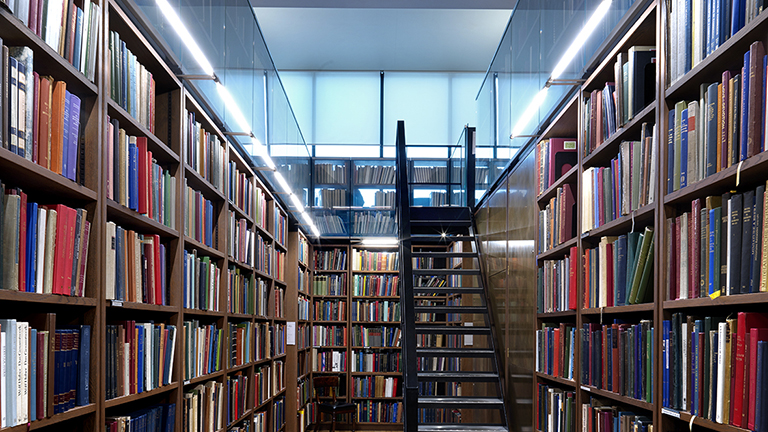
Amber Medland
Amber first joined the Library In 2017 through the Library’s Supported Membership scheme – for half the cost of a gym membership. Making use of the Library “nearly every day when not working”, she has benefitted from the space and support for writing and research, guidance from the librarians, and the insight, inspiration and learning from participating in the occasional event. In its inaugural year of 2020, Amber was selected for the Emerging Writers Programme, which exposed her to working alongside 17 other new writers.
Since joining the Library, Amber has signed a book deal with Faber for her first published novel, Wild Pets, due out in 2021. Amber juggles writing, copywriting and a part-time job as well as a bustling homelife with five housemates, and credits the Library with providing the space and time needed to sign her first deal.
Amber praises the Library for its exceptionally knowledgeable staff and their highly curated reading lists as sources of information and inspiration. The Library has also helped Amber develop her confidence as a professional writer, and it helped her see writing as her ‘job’ for the first time.
Whilst “the building itself is a beautiful and inspiring space that is highly conducive to working”, Amber’s admiration for the Library lies also in “the sense of solidarity and encouragement when surrounded by other writers facing the same challenges and opportunities”.
In her three years as a member, Amber has appreciated an increased diversity amongst both the users and the written works, as “the books being ordered and stocked are becoming more diverse too”. Through her membership, she has been able to access books that she otherwise would not have been able to, due to their prohibitive cost.
The Library has been pivotal to Amber’s career as a new writer and she sees herself as a “member for life”, renewing her membership after her Supported Membership affordability scheme.

We are delighted to publish From the Silence of the Stacks, New Voices Rise Vol 1, an anthology of writing by the inaugural cohort of The London Library Emerging Writers Programme 2019/2020.
With contributions from 35 writers spanning prose to poetry, non-fiction to YA, stage to screen, this is a feast of words and creativity from an exciting array of bright new talent.
The book is available as a PDF or an eBook. It will also be published as a paperback and will be available soon. The cost of the book will be £2 for the eBook or £8 for the paperback- with all proceeds going back into the Emerging Writers Programme.
Featuring work by: Bebe Ashley, Isabelle Baafi, Alex-David Baldi, Erika Banerji, Carmina Bernhardt, Helen Bowell, Megan Buskey, Sian Chaney-Price, Hattie Clarke, Abass Collier, Swithun Cooper, Natasha Cutler, L M Dillsworth, Joanna Dobson, Karim Flint, Emily Ruth Ford, Anita Goveas, Alice Hughes, Anna Kahn, L Kiew, Lou Kramskoy, Madi Maxwell-Libby, P T McCarthy, Amber Medland, Carly Minsky, Qudsia Mirza, Mónica Parle, Xenobe Purvis, Mandy Rabin, Sabrina Richmond, Laura Sanchez, Lucy Steeds, Deborah Torr, Mia Vigar and Jeremy Wikeley.
APPLICATIONS FOR THE 2021/22 PROGRAMME ARE NOW CLOSED.
The London Library’s Emerging Writers Programme, opens for submissions for the third year today.
Geared towards supporting writers at the start of their careers, the Emerging Writers Programme offers unpublished writers, in all genres, one year’s membership of The London Library (which normally costs £540 per year) alongside writing development masterclasses, literary networking opportunities, peer support and guidance in use of the Library’s resources.
With its rich cultural heritage, extensive open access book collection, dedicated writing spaces and its diverse community of established writers, the benefits of Library membership are invaluable to early career writers. The Emerging Writers Programme is free to enter and free to participate in, thanks to the generous support The London Library has received from A M Heath Literary Agency, Sir Max Hastings, The International Friends of The London Library and the US Founders Circle, the Julio and Maria Marta Núñez Memorial Fund and other anonymous donors.
Many of the writers who have already taken part in the programme have benefited from increased awareness for their writing from the publishing industry and to mark the success of this initiative, the Library has published a free-to-download anthology of new writing by past participants. From the Silence of the Stacks, New Voices Rise features work by 35 writers who were part of the first Emerging Writers Programme which ran from 2019-2020. A limited print run of a physical edition of the Anthology will also be available to purchase direct from The London Library at £8.
In a new development for 2021, The London Library is able to announce that Virago Books has funded The Virago Participation Bursary to support Black women and Black writers from other underrepresented genders to overcome financial barriers that would prevent them from accessing the full Emerging Writers Programme. This could include travel costs, costs associated with childcare or other caring responsibilities and any other costs incurred in order to participate fully in the Programme. Successful applicants who are eligible will be invited to apply for the bursary on acceptance of their place on the Programme. The Virago Participation Bursary will run alongside the Emerging Writers Programme for the next three years.
Philip Marshall, Director of The London Library comments: “The Emerging Writers Programme has proved to be extremely valuable to early career writers by giving them access to the extensive resources and community of The London Library to help them develop their writing talent. We are delighted that Virago Books are supporting us with the Virago Participation Bursary and that AM Heath continue to support the initiative and we look forward to working with our partners, and with all the writers who are selected for the programme this year.”
Sarah Savitt, Publisher at Virago Press says: ‘We at Virago read and supported the Black Writers’ Guild open letter published in June 2020 calling for action against racial inequality within the British publishing industry, and setting up this bursary was one of the ways we decided to respond. We are a feminist publishing company and know that women and other underrepresented genders – particularly if they are also people of colour – often face extra challenges in accessing writing development programmes and we hope this bursary will make a meaningful difference to a group of writers each year. Publishers can’t exist without writers – and readers – and we know that The London Library is a wonderful place for both.’
Sara Wheeler, travel writer, London Library trustee and chair of the judging panel for the Emerging Writers Programme 2021 comments; “Ten non-fiction books in thirty years? I couldn’t have done it without The London Library, an extraordinary resource, indispensable inspiration and warmly congenial home to writers of all persuasions. I remember the challenges of kickstarting a career with a blank page, which is why I am thrilled to support new voices though the impressive Emerging Writers Programme. Now, especially, in a climate of shrinking resources, I am proud to see the London Library offering this opportunity.”
The closing date for applications is 5 March 2021; applications will then be selected anonymously by a panel of judges. The judges for the Emerging Writers Programme 2021 are: Publishing Director at Virago, Abacus and Little, Brown Ailah Ahmed; YA and adult fiction writer Sareeta Domingo; screenwriter and previous EWP participant Karim Flint; Forward Prize-winning poet Will Harris; playwright and screenwriter Alexis Zegerman; novelist and memoirist Tim Lott; agents from A M Heath; and travel writer and London Library trustee Sara Wheeler (chair).
Read more: The London Library Emerging Writers Programme opens for submissions for third year
In accordance with the Government restrictions that have been put in place under the newly-announced Tier 4, we regret that we will have to close The London Library’s building until further notice. We’ll provide updates through our website and newsletters to let you know how the situation is developing.
The temporary closure of our building means that members will be unable to come into the Library to borrow books. However, we will continue to offer postal loans so that members can order books online and have them posted to them free of charge. Over the next two weeks the postal loans may be slower than usual due to the bank holidays and increased demand on the postal system over Christmas, but we will endeavour to respond to queries and get books to you as soon as we are able.
If you already have books awaiting collection at the Library, please email This email address is being protected from spambots. You need JavaScript enabled to view it. if you would like these posted to you, or to let us know if you no longer need them.
In addition to postal loans, our online services (Catalyst and the eLibrary) will be fully operational throughout at catalyst.londonlibrary.co.uk, providing access to millions of pages of information. We have also recently added eBooks to our offering through OverDrive.
Our staff will continue to maintain core administrative services and will be able to handle enquiries about membership and to provide information and updates about the Library, but inevitably some of these services will be more restricted than previously.
This is a very difficult period for everybody, but we look forward to when we can resume normal service, reopen our doors and welcome you all back into the Library. In the meantime, we are very grateful for your continued cooperation and support.



